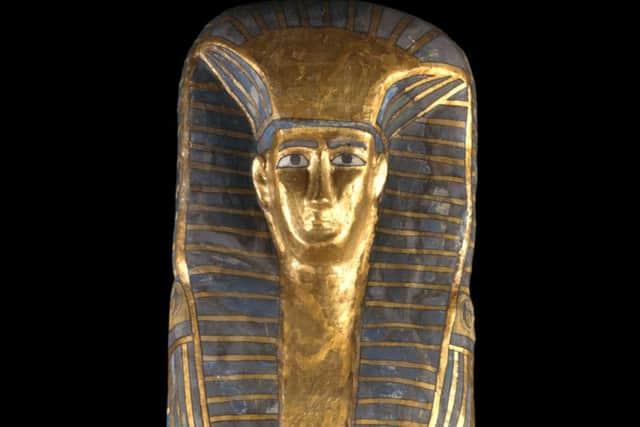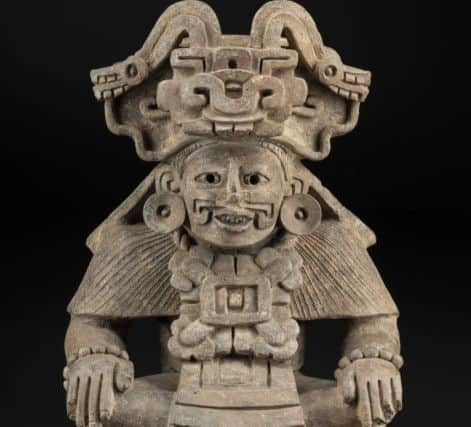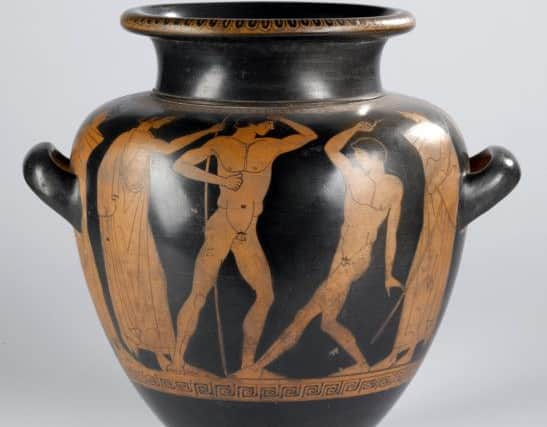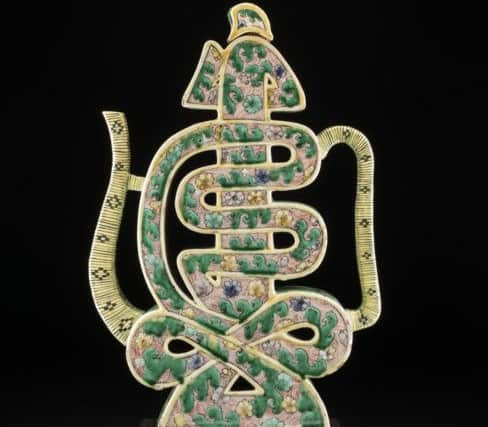National Museum of Scotland reveals new Egyptian and East Asian treasures showcase
Now the National Museum of Scotland has unveiled the final phase of its £80 million regeneration - brand new galleries for Ancient Egyptian and East Asian treasures, as well as ceramics drawn from around world.
More than 1300 objects will go on public display - 40 per cent for the first time in decades or for the very first time - from Friday after completion of a £3.6 million project backed by nearly 500 different donors.
Advertisement
Hide AdAdvertisement
Hide AdThey are expected to help visitor numbers soar well above the 2.3 million who flocked to the attraction last year.


This compared to the 700,000 visitors the museum was attracting before the refurbishment project was announced in 2004 - six years after an extension to showcase Scottish treasures in the national collection was created.
Dr Gordon Rintoul, director of the museum, who has overseen the project since its inception, said he was now targeting breaking the three million visitor barrier following completion of the work on the original building, which was previously known as the Royal Museum and dates back to 1866.
Highlights of the new Egyptian gallery, which spans 4000 years of history and includes objects which have been in the national collection for 200 years, include a royal coffin that an unknown queen was buried in which dates from the 16th century BC, and a decorative box made in honour of the Pharaoh Amenhotep, who ruled during the 15th century BC.
The collection of Chinese, Japanese and Korean treasures - which date from 1100 BC to the present day - include a Ming dynasty rice measure, a Manchu bridal outfit that was part of a collection amassed by King Edward VII, and Samurai armour from the 19th century.


Ceramic treasures being showcased include an Ancient Greek vase made in Athens around 630 BC and a funeral urn used by the Zapotecs - an indigenous pre-Columbian civilisation.
Objects range in size from a an Eyptian gold fish amulet measuring just 10mm x 6mm to a Japanese bronze bodhisattva statue, which is 2.4 metres tall and weighs in at 640kg.
Advertisement
Hide AdAdvertisement
Hide AdThe oldest object, which can be found in the Ancient Egypt gallery, is a Palaeolithic Acheulean hand-axe, which is at least 40,000 years old.
Dr Rintoul said: “We’re not making any predictions about how many extra visitors we are going to get, but both Ancient Egypt and East Asia are clearly topics that are of great public interest, so we’re expecting the new galleries to help increase visitor numbers. It would be good to hit three million.


“There was no plan for this building at all when I was appointed in 2002. I remember meeting the senior team after I started and saying to all of them: ‘A huge amount of effort and energy has gone into the new building, but what are the plans for the old building?’ There was no clear answer.
“I was a bit surprised nothing was in the pipeline. That was what led to the drawing up of a long-term masterplan.
“This building felt very outdated back then. Although new galleries had been created since the museum opened, there had been no coherent development across the whole building.
“We really went back to the funding roots of the museum when the first director said he wanted to create a museum of the world in relation to Scotland.


“That philosophy, of being international with a Scottish thread running through it, has driven the whole project.
Advertisement
Hide AdAdvertisement
Hide Ad“This project has bucked the trend in many ways, including the fact it has come in on time and on budget.
“Most museums get a big increase in visitor numbers when they open developments but are back to where they started from after a few years. We have increase our visitor numbers three and a half fold and they’ve stayed up. That’s almost unique for a museum in the UK.”
Bruce Minto, chair of the board of trustees of the museum, said: “This is a truly historic moment in the life of a great museum.
“The transformation of this iconic Victorian building on time and on budget is an achievement of which the nation can be rightly proud.
“Our outstanding collections help us to tell a vast range of diverse and fascinating stories globe highlighting Scots involved in invention, innovation and discovery.”
HIGHLIGHTS
Samurai armour: A complete suit, made from hammered bronze, silk and leather, dating from early 19th century Japan.
Box of Amenhotep II: Made from cedar, ebony, ivory and gold during the reign of the Pharaoh who ruled ancient Egypt during the 15th century.
Advertisement
Hide AdAdvertisement
Hide AdQurna Queen coffin: Dating back to 1585–1545 BC, it comes from the only intact royal burial group outside of Egypt.
Ming dynasty rice measure: Carved with a design of five-clawed dragons, symbolising imperial power, it was probably used by emperors themselves.
Manchu bridal outfit: A custome which would have been made for an elite Chinese woman, to be worn at her wedding, on a significant birthday and other important family occasions.
Gold catfish pendant: part of a haul of jewellery recovered from an intact tomb at Harageh, in Egypt by Flinders Petrie, the London-born collector known as “the father of Egyptian archaeology.”
Pyramid casing block: The only stone from the Great Pyramid of Giza to go on display anywhere in the world outside of Egypt. It was brought to Scotland for Charles Piazzi Smyth, the Astronomer Royal of Scotland, in 1865.